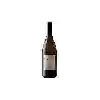
Winery Olivier ThierriazIn Poculis Pouilly-Fumé
This wine generally goes well with pork, vegetarian or shellfish.
Food and wine pairings with In Poculis Pouilly-Fumé
Pairings that work perfectly with In Poculis Pouilly-Fumé
Original food and wine pairings with In Poculis Pouilly-Fumé
The In Poculis Pouilly-Fumé of Winery Olivier Thierriaz matches generally quite well with dishes of pork, shellfish or spicy food such as recipes of breton galette with buckwheat flour, californian sushi (reverse maki) or chicken curry with coconut milk and cashew nuts.
Details and technical informations about Winery Olivier Thierriaz's In Poculis Pouilly-Fumé.
Discover the grape variety: Gros Manseng
Gros Manseng blanc is a grape variety that originated in France (Netherlands). It produces a variety of grape specially used for wine making. It is rare to find this grape to eat on our tables. This variety of grape is characterized by medium-sized bunches and small grapes. Gros Manseng blanc can be found in several vineyards: South-West, Languedoc & Roussillon, Cognac, Bordeaux, Armagnac, Provence & Corsica, Rhone valley, Loire valley, Savoie & Bugey, Beaujolais.
Informations about the Winery Olivier Thierriaz
The Winery Olivier Thierriaz is one of of the world's greatest estates. It offers 2 wines for sale in the of Pouilly-Fumé to come and discover on site or to buy online.
The wine region of Pouilly-Fumé
The wine region of Pouilly-Fumé is located in the region of Haute Loire of Loire Valley of France. Wineries and vineyards like the Domaine Didier Dagueneau (Louis-Benjamin Dagueneau) or the Domaine de Ladoucette produce mainly wines white and red. The most planted grape varieties in the region of Pouilly-Fumé are Chenin blanc, Chardonnay and Cabernet franc, they are then used in wines in blends or as a single variety. On the nose of Pouilly-Fumé often reveals types of flavors of earth, black currant or fennel and sometimes also flavors of lime zest, banana or fresh cut grass.
The wine region of Loire Valley
The Loire Valley is a key wine region in western France. It follows the course of the Loire River on its Long journey through the heart of France, from the inland hills of the Auvergne to the plains of the French Atlantic coast near Nantes (Muscadet country). Important in terms of quantity and quality, the region produces large quantities (about 4 million h/l each year) of everyday wines, as well as some of France's greatest wines. Diversity is another of the region's major assets; the styles of wine produced here range from the light, tangy Muscadet to the Sweet, honeyed Bonnezeaux, the Sparkling whites of Vouvray and the juicy, Tannic reds of Chinon and Saumur.
The word of the wine: Fade in
Said of a wine whose different elements are perceived in the mouth in a pleasant and harmonious way.





